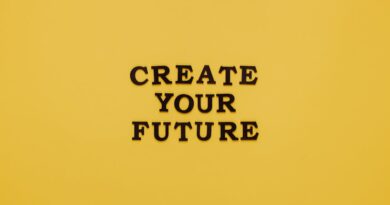Building a Portfolio That Represents You
Are you ready to showcase your skills and passions? A well-crafted portfolio can do just that. Whether you’re an artist, a writer, or a professional in any field, your portfolio is your personal brand on display.
But how do you create one that truly represents you? Lets dive into the key steps for building a portfolio that stands out.
What is a Portfolio?

Simply put, a portfolio is a collection of your work. It’s like a visual resume where you highlight your best achievements. Think of it as your personal showcase, displaying what you do best.
Portfolios can include:
- Artworks
- Writing samples
- Project reports
- Client testimonials
A good portfolio tells your story. It shows how you think, create, and solve problems. But how do you start building one?
Why is Your Portfolio Important?

Your portfolio is your first impression. Research shows that 80% of hiring managers prefer to see a portfolio rather than just a resume. A strong portfolio can set you apart in a competitive job market.
It not only showcases your work but also reflects your personality and style. A potential employer or client can get a sense of who you are just by looking at your portfolio.
How Do You Choose What to Include?

Deciding what to showcase can be tricky. Here are some tips to help you choose:
- Quality over Quantity: It’s better to have a few excellent pieces than many mediocre ones.
- Variety: Show a range of skills. This can include different styles, topics, or formats.
- Relevance: Tailor your portfolio to the job or opportunity you want. Include work that aligns with your goals.
Ask yourself: What do you want to be known for? Let that guide your selections.
What Format Should You Use?

Portfolios can be physical or digital. Each format has it’s pros and cons.
Physical Portfolios: These can be impressive in interviews. They allow you to present your work directly. However, they can be heavy to carry and may not be practical for all situations.
Digital Portfolios: These are easy to share and update. You can include multimedia elements like videos or interactive content. Websites like Wix or Squarespace can help you create a stunning online portfolio.
Consider your audience and the medium they prefer. This will help you choose the best format.
How Do You Organize Your Portfolio?
Organization is key to a great portfolio. A well-structured portfolio guides the viewer through your work smoothly. Here are some ideas:
- Chronological Order: Show your growth and how your skills have developed over time.
- Thematic Groups: Organize by types of work, such as illustrations, essays, or projects.
- Highlight Your Best Work First: Make sure the best pieces are easily visible.
Think about the story you want to tell with your portfolio. A clear structure helps the viewer understand your journey.
How Do You Write Captivating Descriptions?
Descriptions matter. They provide context and show your thought process. Heres how to write great descriptions:
- Be Clear: Use simple language and avoid jargon.
- Be Concise: Keep it short. A few sentences should suffice.
- Show Your Role: Explain what you did in each project. This highlights your specific contributions.
For example, instead of saying, I designed a poster, you could say, I created a vibrant poster that increased attendance at the annual festival by 30%. This tells the reader not just what you did, but the impact of your work.
How Do You Make It Visually Appealing?
First impressions are visual. Make sure your portfolio looks good. Here are some tips:
- Use High-Quality Images: Blurry or pixelated images can hurt your credibility.
- Consistent Layout: A uniform style helps create a harmonious look.
- White Space: don’t overcrowd your pages. Use space to let your work breathe.
Remember, your portfolio should reflect your style. Let your personality shine through your design choices.
What Tools Can Help You Build Your Portfolio?
There are many tools to help you create a stunning portfolio. Here are a few popular ones:
- Adobe Creative Cloud: Great for graphic designers and artists.
- Canva: An easy-to-use design tool for creating layouts.
- WordPress: Perfect for blogging and showcasing writing samples.
Explore different tools and find what works best for you. Each offers unique features that can enhance your portfolio.
How Do You Keep Your Portfolio Updated?
Keeping your portfolio fresh is essential. Aim to update it regularly. Here are some strategies:
- Set a Schedule: Decide how often you will update your portfolio. Every six months works well for many.
- Remove Old Work: If something doesnt represent your current skills, consider taking it out.
- Include New Projects: Add recent work that showcases your growth.
Updating your portfolio keeps it relevant and reflects your current abilities.
How Do You Share Your Portfolio?
Sharing your portfolio is the final step. Consider various ways to get it in front of the right people:
- Networking Events: Bring a physical copy or share a link to your digital portfolio.
- Social Media: Use platforms like LinkedIn to showcase your work.
- Email Signatures: Include a link to your portfolio in your email signature.
Think about where your target audience spends their time. This will help you decide the best ways to share your work.
Common Misconceptions About Portfolios
Many people have myths about portfolios. Lets clear a few up:
- You Need to Be a Professional: Not true! Portfolios are for everyone looking to showcase their work, even students.
- It Has to Be Perfect: Focus on progress, not perfection. Your portfolio will evolve over time.
- it’s Only for Artists: Portfolios are beneficial in many fields, including business, tech, and education.
Understanding these misconceptions can help you approach your portfolio with confidence.
What are the Final Takeaways?
Building a portfolio that represents you takes thought and effort. Here are some key points to remember:
- Showcase quality work that aligns with your goals.
- Organize your portfolio in a way that tells your story.
- Keep it visually appealing and easy to navigate.
- Update regularly to reflect your current skills.
In the end, your portfolio is a reflection of you. Make it authentic and let your personality shine through.
Ready to start building your portfolio? Take the first step today! Visit or read more about portfolio tips at The Balance Careers.
With these guidelines, you’re well on your way to creating a portfolio that stands out. Good luck!



